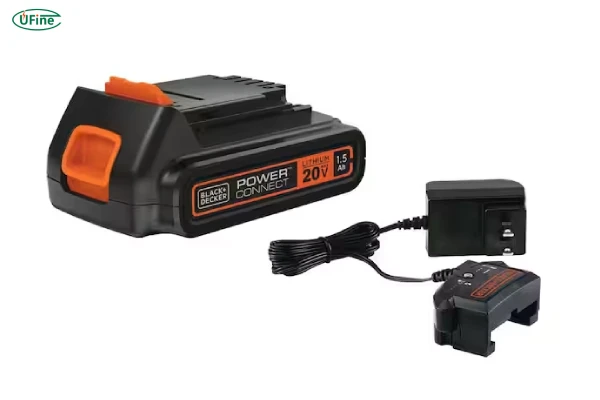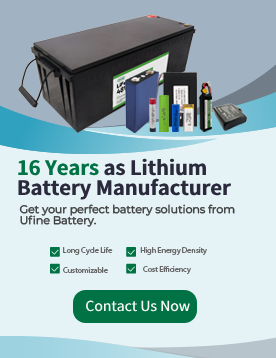
- Part 1. Types of drill battery chargers
- Part 2. Compatible battery types
- Part 3. Choosing the right drill battery charger
- Part 4. Charging time and efficiency
- Part 5. Safety tips when using a drill battery charger
- Part 6. Maintenance and care for your charger and batteries
- Part 7. Troubleshooting common charger issues
- Part 8. Best drill battery charger brands and models
- Part 9. FAQ
Part 1. Types of drill battery chargers
Not all drill battery chargers are the same. Depending on your needs, you might prioritize speed, compatibility, or convenience. Here are the main types:
Standard Chargers
These are basic chargers included with most cordless drill kits. They provide steady charging at a moderate speed, usually taking 1–3 hours for a full charge. Standard chargers are affordable and gentle on batteries, making them ideal for casual DIY users.
Fast Chargers
Fast chargers can replenish a battery in as little as 30–60 minutes. They’re a great choice for professionals who can’t afford long downtime. However, fast charging may generate more heat, which, if used excessively, can shorten battery lifespan.
Universal Chargers
These chargers work with multiple brands and battery chemistries. They’re perfect if you own tools from different manufacturers. However, not all “universal” chargers truly fit every brand—check the specifications before buying.
Brand-Specific Chargers
These are designed exclusively for one manufacturer’s tools (e.g., DeWalt, Makita, Bosch, Milwaukee). They guarantee perfect compatibility, optimized charging speeds, and built-in safety features tailored to that brand’s batteries.
Single-Bay vs. Multi-Bay Chargers
- Single-bay chargers hold one battery at a time—compact and portable.
- Multi-bay chargers can charge two or more batteries simultaneously, which is ideal for heavy tool usage in workshops or job sites.

Part 2. Compatible battery types
Drill battery chargers must match the battery chemistry and voltage to work safely and efficiently. Using the wrong charger can lead to poor performance or even battery damage.
Lithium-Ion (Li-ion)
- Pros: Lightweight, high energy density, no memory effect, long lifespan.
- Cons: Sensitive to high heat, may degrade if stored fully charged for long periods.
- Charging Tip: Use a charger designed for Li-ion cells, as it will include precise voltage and current control to prevent overcharging.
Nickel-Cadmium (NiCd)
- Pros: Rugged, can handle extreme temperatures, affordable.
- Cons: Lower energy density, memory effect if not fully discharged periodically.
- Charging Tip: Occasionally fully discharge NiCd batteries before recharging to maintain capacity.
Nickel-Metal Hydride (NiMH)
- Pros: Higher capacity than NiCd, less toxic, reduced memory effect.
- Cons: Self-discharge faster than Li-ion when stored.
- Charging Tip: Avoid leaving NiMH batteries on the charger for extended periods after a full charge.
Voltage and Capacity Considerations
Most cordless drills run on voltages like 12V, 18V, or 20V. Chargers are usually designed for a specific voltage range—never try to charge a 20V battery with a 12V charger. Capacity (measured in Ah) affects run time but not charging compatibility, as long as the charger supports the battery voltage.
Part 3. Choosing the right drill battery charger
Selecting the right charger ensures safety, performance, and convenience. Here’s what to look for:
Match Charger to Battery Type and Brand
Check your battery’s label for chemistry (Li-ion, NiCd, NiMH) and brand. Using an incompatible charger risks damaging the battery or causing safety hazards.
Voltage and Amperage Requirements
The charger’s output voltage should match the battery’s voltage exactly. Amperage determines charging speed—higher amps usually mean faster charging but may increase heat.
Fast Charging vs. Battery Longevity
While fast chargers are convenient, they can generate heat that accelerates wear over time. If you don’t need immediate turnaround, a standard charger will extend battery life.
Extra Features to Consider
- LED Indicators: Show charging status and errors.
- Automatic Shutoff: Prevents overcharging.
- Maintenance/Trickle Mode: Keeps batteries topped up without overcharging.
Part 4. Charging time and efficiency
Charging time depends on the battery’s capacity and the charger’s output. For example:
- 2.0Ah battery + 2A charger: ~1 hour
- 4.0Ah battery + 2A charger: ~2 hours
- 5.0Ah battery + fast charger (4A): ~1.25 hours
Optimizing Charging Speed Without Overheating
- Use the charger recommended by the manufacturer.
- Charge in a cool, dry location to prevent heat buildup.
- Rotate between multiple batteries to avoid repeated fast charges on the same pack.
Signs of a Fully Charged Battery
- LED indicator turns green or stops flashing.
- Charger automatically stops charging.
- Battery feels warm but not excessively hot.
Part 5. Safety tips when using a drill battery charger
Chargers handle high electrical currents, so proper usage is critical:
- Prevent Overcharging: Always unplug after the battery is fully charged unless the charger has a maintenance mode.
- Avoid Water and Dust Exposure: Keep chargers away from damp environments and dusty workshops.
- Use Certified Chargers: Look for UL, CE, or FCC certification to ensure compliance with safety standards.
- Store Safely: Keep chargers and batteries away from direct sunlight and extreme temperatures.
Part 6. Maintenance and care for your charger and batteries
Cleaning Contacts and Vents
Dust and debris can block ventilation or prevent proper electrical contact. Use a dry cloth or compressed air to clean charger slots regularly.
Proper Storage
Store chargers in a dry, room-temperature environment. Keep batteries partially charged (around 40–60%) if not using them for extended periods.
Extending Battery Lifespan Through Charging Habits
- Avoid running batteries completely flat unless they are NiCd.
- Don’t leave batteries stored on the charger for weeks at a time.
- Use the charger’s maintenance mode if available for long-term storage.
Part 7. Troubleshooting common charger issues
Even quality chargers can encounter problems. Here’s how to diagnose common issues:
Charger Not Powering On
- Check the power outlet.
- Inspect the charger cable for damage.
- Test with a different compatible battery.
Battery Not Charging or Charging Slowly
- Ensure the battery is within the operating temperature range.
- Clean the battery and charger contacts.
- If the battery is old, it may no longer hold a charge.
Error Lights and Their Meanings
Many chargers have flashing LED patterns to indicate issues:
- Flashing Red: Faulty battery or charging error.
- Solid Red: Charging in progress.
- Flashing Green: Battery in maintenance mode or too hot to charge.
Part 8. Best drill battery charger brands and models
Several manufacturers produce reliable and efficient chargers for drill batteries. Here are some top choices:
Makita DC18RC
- Fast-charging model for 18V Li-ion batteries.
- Built-in fan cooling for longer battery life.
DeWalt DCB115
- Charges 12V and 20V MAX Li-ion batteries.
- Compact and lightweight.
Milwaukee M12 & M18 Multi-Voltage Charger
- Charges both 12V and 18V batteries.
- Sequential charging optimizes performance.
Bosch GAL18V-40
- Affordable fast charger for Bosch 18V batteries.
- LED status indicators for easy monitoring.
Ryobi IntelliPort Charger
- Smart technology prevents overcharging.
- Maintains battery health during storage.
When choosing a charger, always prioritize compatibility with your existing battery system for maximum safety and performance.
Part 9. FAQ
Can I use a different brand’s charger for my drill battery?
Not recommended unless the charger explicitly supports your battery brand and voltage.
How long should I leave my battery on the charger?
Only until it’s fully charged. Most modern chargers have auto shutoff to prevent overcharging.
Is it okay to leave the battery charging overnight?
If your charger has safety shutoff, yes. Otherwise, unplug after charging is complete.
Why is my charger making a noise?
Some chargers use internal fans for cooling, which is normal. Loud or unusual noises may indicate a fault.
How do I know if my battery or charger is faulty?
Test your battery on another compatible charger. If it charges normally, your charger is the problem.
Related Tags:
More Articles

A Complete Guide to the Best Batteries for Flashlights
Discover the best batteries for flashlights: alkaline, lithium, NiMH & rechargeable options. Tips for performance and maintenance.
Graphene Battery vs Lithium Battery: Which is Better?
Compare graphene battery vs lithium battery in energy density, charging speed, lifespan, cost, and EV applications. Learn which battery leads in 2025.
What is the Difference Between MCA and CCA on Batteries?
Learn the difference between MCA and CCA batteries. Understand what MCA means, what CCA is, and how to choose the right battery for vehicles or marine engines.
Type of Lithium Battery Voltage
Learn lithium ion battery voltage, nominal voltage, and voltage range. Compare Li-ion, LiPo, LiFePO4, and 18650 voltages, charging, and device compatibility.
Gel Battery vs Lead Acid: A Detailed Comparison
Compare gel and lead-acid batteries: lifespan, cost, charging, DoD, safety, and key use cases. Find the right battery for solar, marine, EV, UPS, and daily use.


